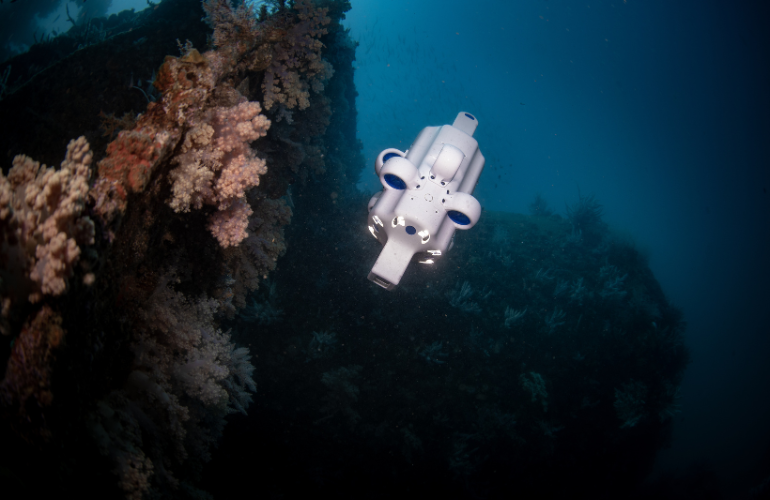|
Listen to this article  |

In October 2023, Advanced Navigation deployed its micro-autonomous underwater vehicle (AUV) Hydrus off Rottnest Island, Western Australia. The purpose of the mission was to capture high-quality still imagery and 4K video, for the purposes of benthic inspection and 3D photogrammetry reconstruction.
The retrieved datasets highlight several notable features of Hydrus including the ability to operate in dynamic currents, navigate complex terrain, and produce incredibly high-resolution data deliverables.
Upon location, the vessel recorded a surface current of over 1.5 knots, with substantial wave action and 18 knots of wind. Hydrus was deployed from the vessel and tracked with Advanced Navigation’s acoustic positioning system, Subsonus. Once underwater, the vehicle descended to an operating depth of around 25m, with an altitude of 1m.
Intuitive Mission Planner
To capture high quality still images, with embedded georeferencing, Hydrus had a mission planned to capture images with 80% forward overlap and 60% lateral overlap. Due to the low altitude and high resolution required, Hydrus flew the mission at a slow speed, shooting video at 4K 30FPS, to reduce motion blur. Once at the mission site, Hydrus was able to run a ‘lawnmower’ pattern as planned.
Capturing Sea Kelp Across Complex Seabed
Classic techniques to capture imagery in seabeds with swirling, dynamic currents can often prove difficult. Here, divers typically struggle to maintain constant positioning and remote operated vehicles (ROVs) can suffer from drag due to their tethers.
In contrast, Hydrus is able to utilise its doppler velocity log (DVL) to track its position over the seabed and use its high level of control authority from the unique seven thruster configuration to maintain constant lines – in spite of swirling, dynamic currents. This is evident in the movement of the kelp in the video below.
Maintaining Set Altitude over Difficult Reef Terrain
Although the terrain of the seabed in this specific spot was complex to navigate, Hydrus was able to meet the challenge and maintain a set altitude of 1m for the duration of the mission. To achieve this feat, Hydrus measures the DVL beams and manoeuvres to hold the preset altitude. Similarly, this system doubles as Hydrus’ obstacle avoidance system, i.e., when objects are acoustically detected in its path, Hydrus will move over the top of them to maintain its set altitude.
In the clip below, Hydrus performs data capture in the camera-down orientation over a complex reef system.
Precise Image Georeferencing
Following the successful data capture, Hydrus was recovered to the boat, and the data was downloaded using WiFi. Initial data quality control was then performed to assess image quality and georeferencing.
Developing 3D Models of Reconstructed Seabed
The final data processing was performed in Agisoft Metashape, where a 3D mesh was reconstructed using Structure from Motion (SfM) photogrammetry.
The reconstructed seabed, with draped imagery, and underlying bathymetric digital elevation model are shown below.

Hydrus
Hydrus takes the drone revolution underwater with the most advanced sonar, navigation and communications systems of any subsea vehicle. It contains a DVL, USBL, INS, acoustic and optical
modems, all tightly integrated. This enables highly reliable, fully autonomous underwater missions at your fingertips. It also provides obstacle detection and collision avoidance.
View Product
Sponsored content by Advanced Navigation
Credit: Source link


Comments are closed.